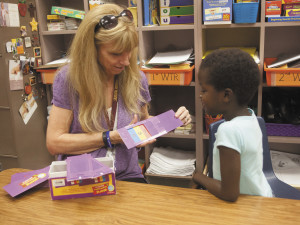
Photo by Tim Hacker
Dr. Dawn Foley, director of curriculum and instruction for Mesa Public Schools, discusses the district’s Montessori program.
What is Montessori?
The Montessori philosophy dates back to the early 1900s. It is based on the work of Dr. Maria Montessori, an Italian physician and educator who developed a teaching method based on scientific observations of young children’s behaviors. She found children learned best in a homelike environment, filled with developmentally appropriate materials, which provide experiences contributing to the growth of self-motivated independent learners.
Why is Mesa Public Schools program top-notch?
Our Montessori teachers are highly qualified. They have dual certification from the Arizona Department of Education and the Montessori Accreditation Council for Teacher Education. Our Montessori teachers receive professional development, training and support to continually expand their knowledge and skills to implement the best educational practices.
An exciting component of our program is the fact we offer a full Montessori preschool and kindergarten option for children ages 3 to 5. This early childhood option is available at the Jordan Center for Early Education. Students can transition to one of our nurturing elementary school programs, grades kindergarten through sixth grade, at Bush, Johnson or Pomeroy elementary schools.
When you step into a Montessori classroom, what will you see?
Students are placed in multi-aged classrooms, based on developmental periods. It is important for teachers, students and families to develop long-term relationships. Therefore, it is common for students to spend several years in a classroom with the same teacher.
Environments are prepared with multisensory, sequential and self-correcting materials to support learning. There is a balance between freedom and responsibility, and children may work independently or in small groups.
When you enter a classroom, you will find child-size furniture and spaces low to the ground, which support learning. Dr. Montessori believed the child’s learning environment should be peaceful and welcoming. Teachers often are side by side with students, interacting with them instead of at the front of the classroom or a desk.
Students are encouraged to progress at their own pace, and this is supported through individualized work plans based on their achievement levels and progress. Hands-on learning is central to the curriculum to ensure learners are engaged.
For more information regarding Montessori programs, please visit www.mpsaz.org/Montessori.

